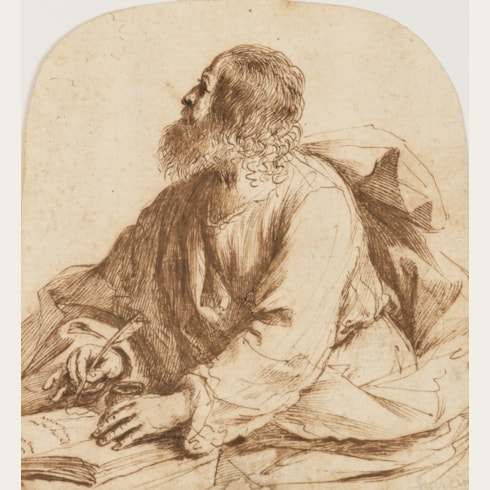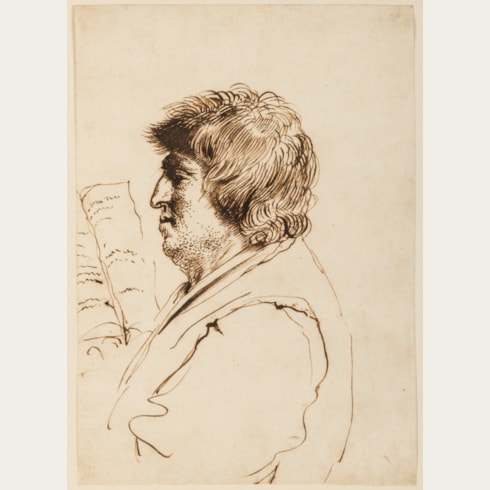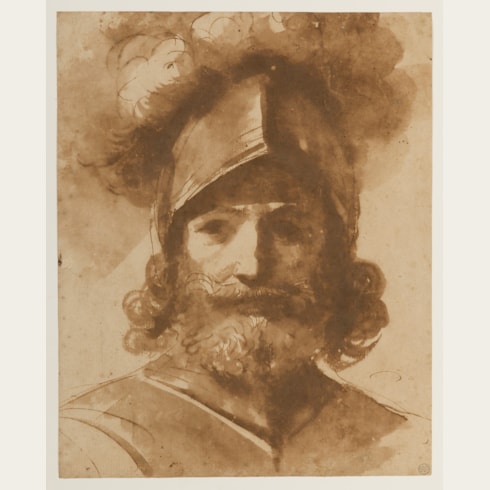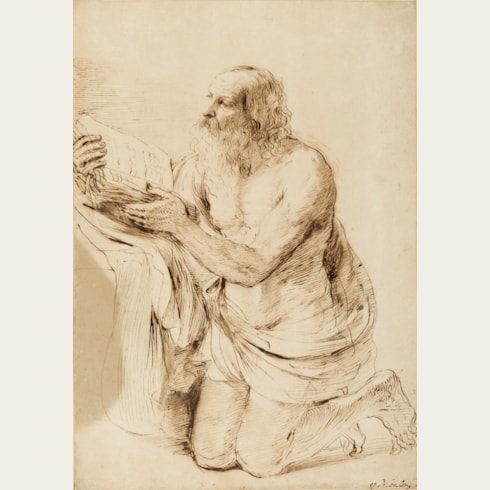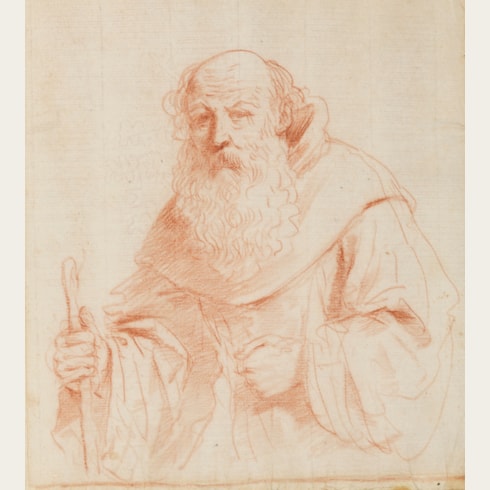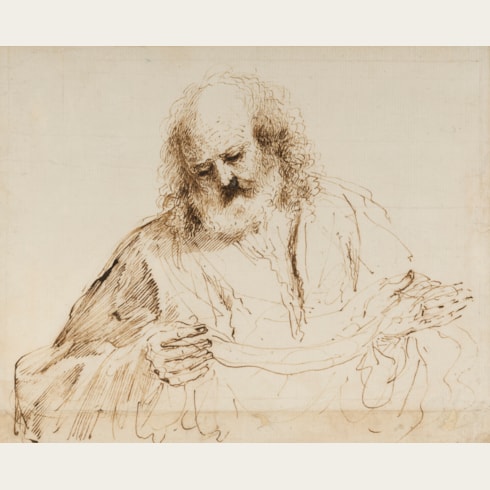Giovanni Francesco Barbieri GUERCINO
(Cento 1591 - Bologna 1666)
A Bearded Old Man
201 x 244 mm. (7 7/8 x 9 5/8 in.)
Watermark: Three mountains with a cross in a circle (Heawood 921; Rome 1646).
Both Nicholas Turner and David Stone have dated this drawing, which may be intended to represent an apostle, to between 1640 and 1650. Guercino used oiled black chalk in a number of comparable figure drawings of this period, such as several sheets in the Royal Collection at Windsor Castle: a Young Man with a Moustache and Tousled Hair, a study of an Old Bearded Man on tinted paper and a Bearded Old Man with his Left Shoulder Bare, as well as a Roman Commander, which is a study for a painting of Cleopatra Kneeling before Augustus of 1640, and a study of a Sleeping Youth, which has been related to two paintings of Endymion Asleep commissioned from Guercino in the 1640s. A stylistic comparison may also be made with a drawing of Saint Biagio Protecting the Town of Cento, executed in oiled charcoal but in poor condition, in the collection of the Civica Pinacoteca il Guercino in Cento.
Similar heads are also seen throughout Guercino’s paintings of the 1640s, such as a Saint Peter Weeping Before the Virgin of 1647 in the Louvre.
Giovanni Francesco Barbieri, known as Il Guercino (‘the squinter’) because he was cross-eyed, was by the second decade of the 17th century one of the leading painters in the province of Emilia. Born in Cento, a small town between Bologna and Ferrara, Guercino was largely self-taught, although his early work was strongly influenced by the paintings of Ludovico Carracci. In 1617 he was summoned to Bologna by Alessandro Ludovisi, the Cardinal Archbishop of Bologna, and there painted a number of important altarpieces, typified by the Saint William Receiving the Monastic Habit, painted in 1620 and now in the Pinacoteca Nazionale in Bologna. When Ludovisi was elected Pope Gregory XV in 1621, Guercino was summoned to Rome to work for the pontiff and his nephew, Cardinal Ludovico Ludovisi. It was in Rome that Guercino painted some of his most celebrated works, notably the ceiling fresco of Aurora in the Casino Ludovisi and the large altarpiece of The Burial and Reception into Heaven of Saint Petronilla for an altar in Saint Peter’s. The papacy of Gregory XV was short-lived, however, and on the death of the Pope in 1623 Guercino returned to his native Cento. He remained working in Cento for twenty years, though he continued to receive commissions from patrons throughout Italy and beyond, and turned down offers of employment at the royal courts in London and Paris. Following the death of Guido Reni in 1642, Guercino moved his studio to Bologna, where he received commissions for religious pictures of the sort that Reni had specialized in, and soon inherited his position as the leading painter in the city.
Guercino was among the most prolific draughtsmen of the 17th century in Italy, and his preferred medium was pen and brown ink, although he also worked in red chalk, black chalk, and charcoal. He appears to have assiduously kept his drawings throughout his long career, and to have only parted with a few of them. Indeed, more drawings by him survive today than by any other Italian artist of the period. On his death in 1666 all of the numerous surviving sheets in his studio passed to his nephews and heirs, the painters Benedetto and Cesare Gennari, known as the ‘Casa Gennari’.
The drawings of Guercino, which include figural and compositional studies, landscapes, caricatures and genre scenes, have always been coveted by later collectors and connoisseurs. Indeed, the 18th century amateur Pierre-Jean Mariette noted of the artist that ‘Ce peintre a outre cela une plume tout-à-faite séduisante’. The largest extant group of drawings by Guercino is today in the Royal Collection at Windsor Castle; these were acquired from the Gennari family by King George III’s librarian, Richard Dalton, between about 1758 and 1764.
Provenance
Private collection
Anonymous sale, New York, Sotheby’s, 21 January 2004, lot 190
Anonymous sale, New York, Sotheby’s, 26 January 2005, lot 132
Private collection.






















